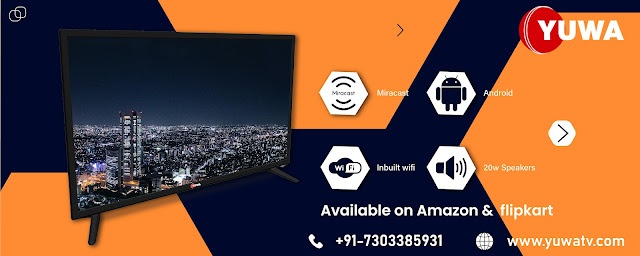Explaining HDR Emissions By The Best Smart TV In India
HDR
(High Dynamic Range) improves pixel quality and displays more realistic images
on a smart TV by detecting bright colors and a high contrast ratio. LED
TV manufacturers strive to maximize the best screen display with
interesting colors and shades by visualizing the results of absolute dynamism.
While non-HDR TVs miss out on capturing details and pigments, HDR (in Best
Smart TV in India) precisely identifies even the tiniest detail and
enhances the image to its maximum potential.
HDR
distinguishes itself from other formats by achieving a higher contrast ratio
than standard formats, which typically produce 300 to 500 nits at most, whereas
HDR aims for much higher. Watching movies in HDR online smart LED TV and then
switching will make you feel dull and light-colored, making the visual
experience more immersive.
Briefing Features
of HDR format
HDRs
are more accurate and clear than other formats of the best
smart TV in India, providing a lifelike experience, as details are
preserved due to bounded features. When it comes to content representation, HDR
is unsurprisingly superior to SDRs. When it comes to content representation
•
Enhanced brightness and contrast
•
Modifies with new formats
•
Enhanced brightness and contrast
Following
technological advancements, TV manufacturers in India began
introducing new specifications and features, such as the HDR format, which is
now enhanced by its two main formats, Dolby and HDR10.
HDR vs. Dolby
Vision
HDR10
is the most basic and standard format layer available, according to LED TV
manufacturers in India. HDR10 is the default for UHD Blue-rays due to its
widespread adoption and standardization, which is typically supported by every
TV you buy. Maximum Frame Light Level (MaxFLL) and Maximum Content Light Level
(MaxCLL) are terms that aid in automatically adjusting the brightness according
to the content. Unfortunately, in HDR10, the content's values remain constant
throughout the run time, causing fluctuations in the brightness of the content,
as some scenes aren't as bright as they could be, while others are much
brighter than they should be.
On
the other hand, Dolby Vision's services are premium and come with a hefty price
tag. This advanced HDR format is the new generation's potential, as its (best
smart TV in India) advancement is beneficial to both commercial cinema
and home theatre applications. Metadata is a component of Dolby Vision that
automatically adjusts the adjustments while watching content, framing the
picture scene by scene. Dolby images have excellent tone definition and natural
spectrum colors, resulting in a more realistic experience with better contrast
range management. The goal of LED
TV manufacturers is to create a well-balanced and detailed image, as
defined by Dolby’s vision.
Ending Context
about HDR
HDR
is the most significant advancement in high-definition video technology. The best
smart LED TV in India with HDR compatibility is good because every
smart TV supports HDR10, but incorporating Dolby Vision could be a premium
option. Deeply enthralled by this vision of the future, TV manufacturers in India
are developing new technologies like these in response to the generation's
desire for more of it. Massive innovations, such as Dolby, are critical formats
for experiencing real-world picture evaluations.





Comments
Post a Comment